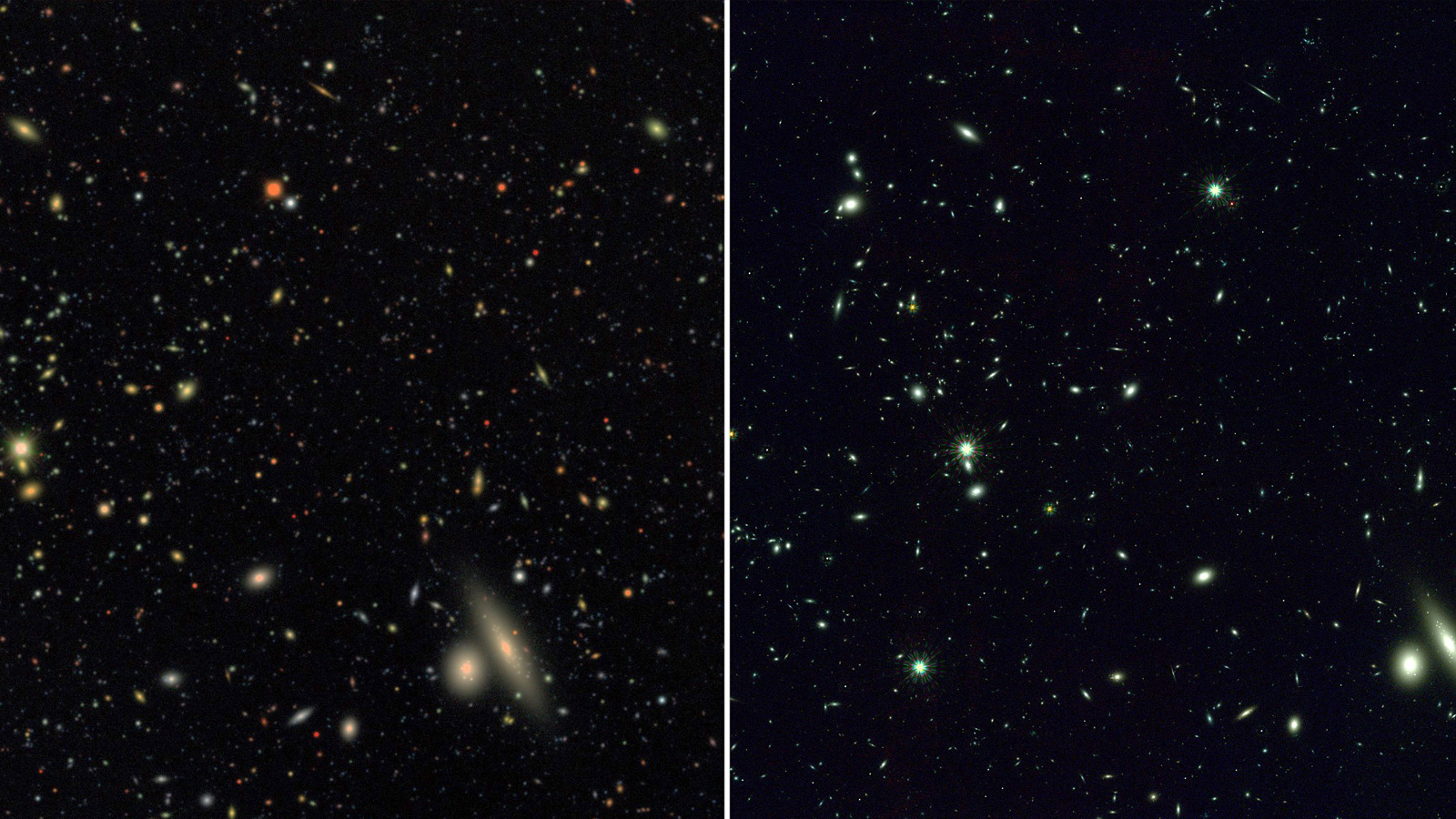Physics | Simulation
Simulating the Cosmos for the Roman and Rubin Telescopes

The Vera C. Rubin Observatory and Nancy Grace Roman Space Telescope are state-of-the-art telescopes set to revolutionize our understanding of the universe when they begin operations in 2025 and 2027, respectively. To prepare for the vast amounts of observational data they will generate, researchers from DOE, NASA, and U.S. universities joined forces to use the ALCF’s Theta supercomputer to produce nearly 4 million simulated images that depict the cosmos as the telescopes will see it.
Challenge
NASA’s space-based Roman telescope and the ground-based Rubin telescope, jointly funded by the National Science Foundation (NSF) and DOE, will provide unprecedented views of the cosmos to help advance research on dark energy, dark matter, and the evolution of the universe. Because the two surveys will produce highly complementary datasets, joint data processing and analysis has been identified as a critical step for achieving the most robust and powerful cosmological and astrophysical results. This approach, however, requires powerful computing resources and advanced simulation techniques to develop methods that take full advantage of the overlapping survey data.
Approach
Researchers from DOE (Argonne, SLAC), NASA, and academia partnered to use the ALCF’s Theta supercomputer to produce a set of overlapping joint synthetic Roman-Rubin time-domain surveys. Carried out as part of the broader NASA-led project, OpenUniverse, the team’s simulations account for the telescopes’ unique instrument performances, making them the most accurate predictions to date of what the telescopes will observe.
Results
The team leveraged Theta’s processing power to generate approximately 4 million simulated images for the Rubin and Roman telescopes in about nine days—a task that would have taken around 300 years on a personal computer. The simulations cover the same patch of the sky, spanning 70 square degrees (roughly equivalent to the sky area covered by 350 full Moons). The team has released an initial 10-terabyte subset of the simulation data for the community to explore, with the remaining 390 terabytes to follow once all the data has been processed. The simulated images give researchers the opportunity to exercise their data processing pipelines, better understand their analysis codes, and accurately interpret the results, ensuring they are prepared to work with real observational data as soon as it becomes available.
Impact
The team’s simulations will help inform future research with the Roman and Rubin telescopes to advance our understanding of dark energy, dark matter, and the evolution of the universe. By overlapping the simulation data for each survey, scientists can learn how to use the best aspects of each telescope—Rubin’s broader view and Roman’s sharper, deeper vision. The combination will provide more precise and accurate insights than could be achieved from either observatory alone.